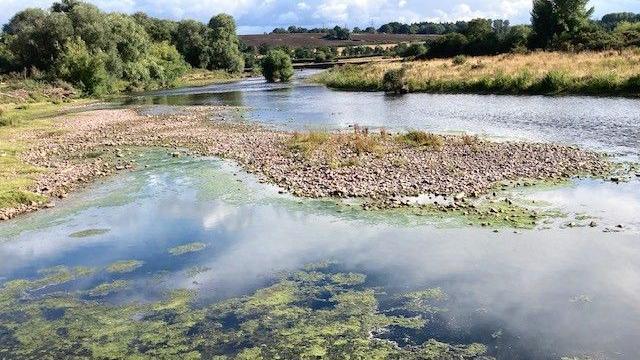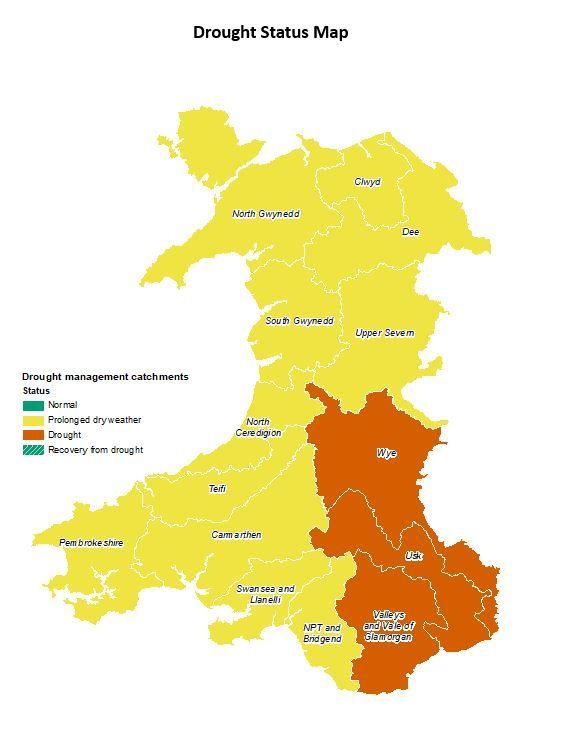Drought declared after driest six months in decades

Algae is seen on the River Usk last month
- Published
A drought has been declared in parts of Wales after the driest six months recorded in almost 50 years.
Environmental watchdog Natural Resources Wales (NRW) said action had been taken after the driest period since the drought of 1976, with high temperatures combining with a lack of rainfall.
Affected areas include Vale of Glamorgan, Rhondda Cynon Taf and those served by the River Wye and Usk.
People and businesses are being urged to use water wisely this summer to help ease pressure on the environment and water supplies.
Will there be a drought where I live?
- Published20 August
Hosepipe ban possible as reservoir levels drop
- Published12 June
Record low rivers prompt drought experts meeting
- Published20 May
NRW said it had received reports of low water levels and dry riverbeds in some locations, as well as reports of fish in distress and algal blooms.
It described the majority of river flows across Wales as "low or exceptionally low, as are groundwater levels".
"Catchments in south east Wales have been particularly impacted, with rivers receiving very little rainfall in recent months, and the Usk and Wye recording persistently high river temperatures which can threaten fish populations," said Rhian Thomas from NRW.
The body added drought can affect farmers who may need to find alternative water supplies and extra food for livestock due to reduced grass growth.
The rest of Wales will remain in "prolonged dry weather status", but NRW said it would continue to monitor river flows, groundwater levels and its effect on the environment, land and agriculture.
The drought status has been declared based on environmental factors, rather than reservoir levels monitored by Dwr Cymru Welsh Water.
Welsh Water said it had no concerns about reservoir levels, with most close to what it "would expect at this time of year".
A spokesperson added it was managing extra demand caused by the dry weather, but had no plans to introduce any temporary restrictions.

Natural Resources Wales has shared a map of the areas affected by the drought status
Natural Resources Wales said the areas covered by the drought status include:
Wye (Wales)
Usk
Valleys (Taff, Ebbw, Rhymney, Ely, Llwyd & Rhondda)
Vale of Glamorgan (Thaw & Cadoxton)
From February to July, Wales has seen the 16th driest six months in 190 years.
Ms Thomas said: "After such an exceptionally dry start to the year, it is going to take considerable time for rivers, ground waters and soils to recover – even if we start to see some rain in the forecast."
While linking climate change with specific individual extreme weather events can be difficult, scientists say that climate change is generally making heatwaves hotter, longer and more frequent.
Sir David King, chair of the Global Climate Crisis Advisory Group, and a former chief scientific adviser to the government, previously told the BBC that drought conditions were "a clear signal that climate collapse is unravelling our water, food and natural systems".